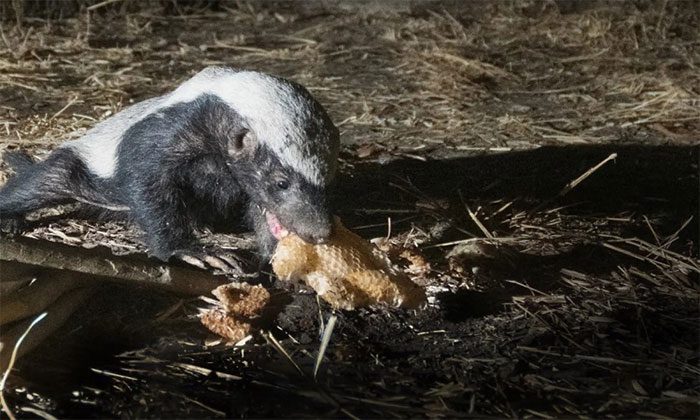The honey badger can collaborate with the honeyguide bird to steal honey and wild bee wax before humans.
The honey badger consuming honey on a tree. (Video: IFL Science).
The honeyguide bird and the honey badger can cooperate to steal honey, according to a study published on June 29 in the journal Zoology. The research found that 61% of honey hunters from the Hadzabe tribe in Tanzania had observed honeyguide birds and honey badgers interacting in this way.
The honeyguide bird enjoys bee wax but lacks the strength to break open hives to access it. For an extended period, this bird has led honey hunters to wild bee hives. While waiting for humans to collect honey, they enjoy the remaining wax. Subsequently, the honeyguide bird seems to have deduced that this method could also apply to another species, the honey badger.
The new study by scientists from the University of California, Los Angeles, is the first to seek large-scale evidence of honeyguide birds (Indicator indicator) and honey badgers (Mellivora capensis) collaborating to raid hives. The research team conducted over 400 interviews with honey hunters across Africa, some of whom had collaborated with honeyguide birds to find honey sources.
While 80% of the surveyed group had never seen the two species interact and were skeptical about the authenticity of the story, researchers discovered several exceptions. In Tanzania, many individuals from three distinct communities reported having seen honeyguide birds and honey badgers teaming up to raid hives for honey and bee wax. The Hadzabe honey hunters operating in this area revealed that 61% of them witnessed this behavior. The Hadzabe people move quietly through the terrain while hunting animals with bows and arrows, making it easier for them to observe the interactions between honeyguide birds and honey badgers, according to Dr. Brian Wood from UCLA.

Honeyguide birds and honey badgers collaborating to raid hives for honey and bee wax.
The honey badger is an unexpected collaborator with the honeyguide bird due to its poor hearing and vision. This may explain why honeyguide birds are willing to shift their collaboration to humans when the opportunity arises.
“Some people speculate that the guiding behavior of honeyguide birds may have evolved through interactions with honey badgers, but they switch to cooperating with humans when we arrive because humans have superior skills in dealing with bees and accessing hives,” said Dr. Claire Spottiswoode from the Zoology Department at the University of Cambridge.


















































